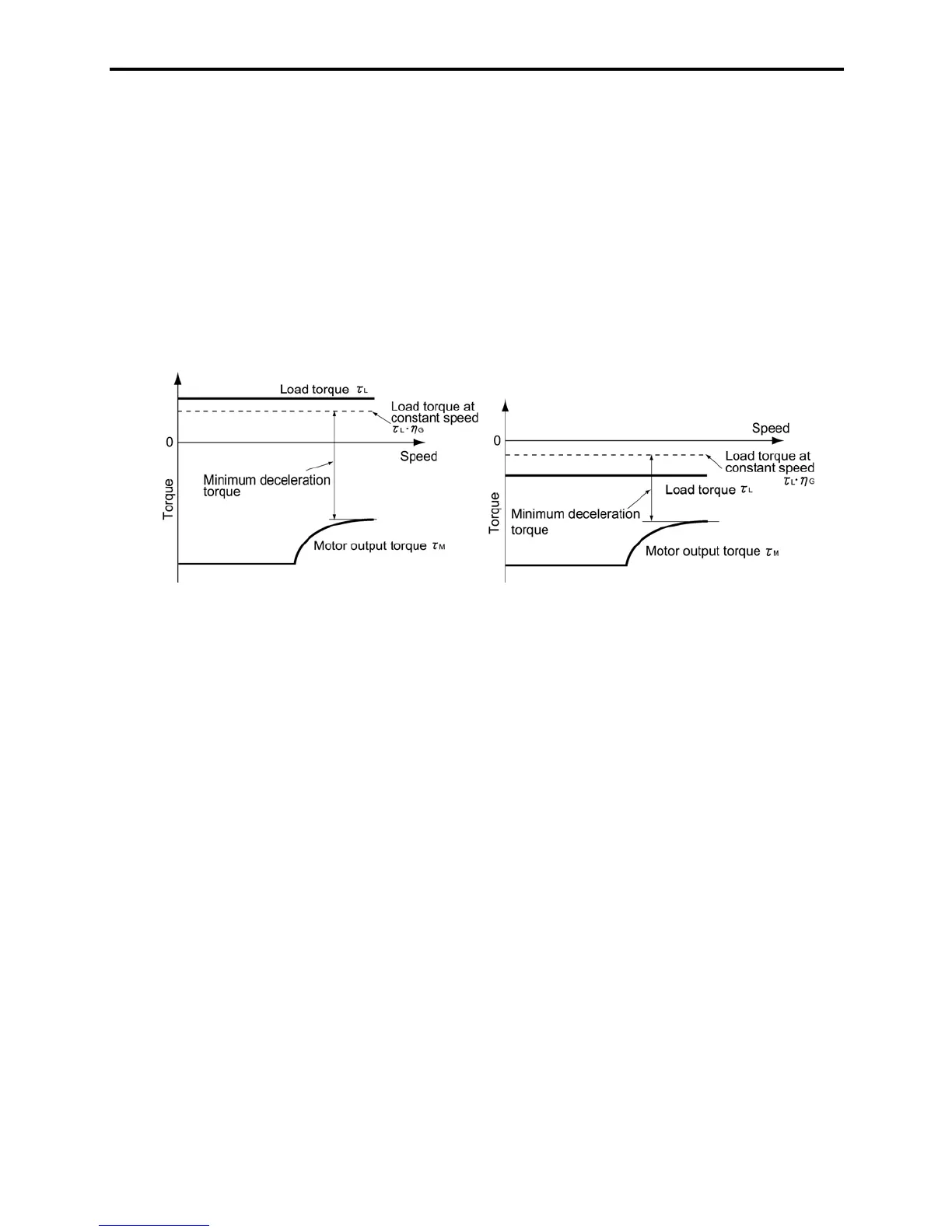7-6
(3) Deceleration time (For detailed calculation, refer to Section 7.1.3.2)
To calculate the deceleration time, check the motor deceleration torque characteristics for the whole
range of speed in the same way as for the acceleration time.
1) Calculate the moment of inertia for the load and motor
Same as for the acceleration time.
2)㩷 Calculate the minimum deceleration torque (See Figures 7.5 and 7.6.)㩷
Same as for the acceleration time.
3) Calculate the deceleration time
Assign the value calculated above to the equation (7.11) to calculate the deceleration time in the
same way as for the acceleration time. If the calculated deceleration time is longer than the
requested time, select the inverter and motor having one class larger capacity and calculate it
again.
Figure 7.5 Example Study of Minimum
Deceleration Torque (1)
Figure 7.6 Example Study of Minimum
Deceleration Torque (2)
(4) Braking resistor rating (For detailed calculation, refer to Section 7.1.3.3)
Braking resistor rating is classified into two types according to the braking periodic duty cycle.
1) When the periodic duty cycle is shorter than 100 sec:
Calculate the average loss to determine rated values.㩷
2) When the periodic duty cycle is 100 sec or longer:
The allowable braking energy depends on the maximum regenerative braking power. The
allowable values are listed in Chapter 6, Section 6.4.1 [1] "Braking resistors."
(5) Motor RMS current (For detailed calculation, refer to Section 7.1.3.4)
In metal processing machine and materials handling machines requiring positioning control, highly
frequent running for a short time is repeated. In this case, calculate the maximum equivalent RMS
current value (effective value of current) not to exceed the allowable value (rated current) for the
motor.

